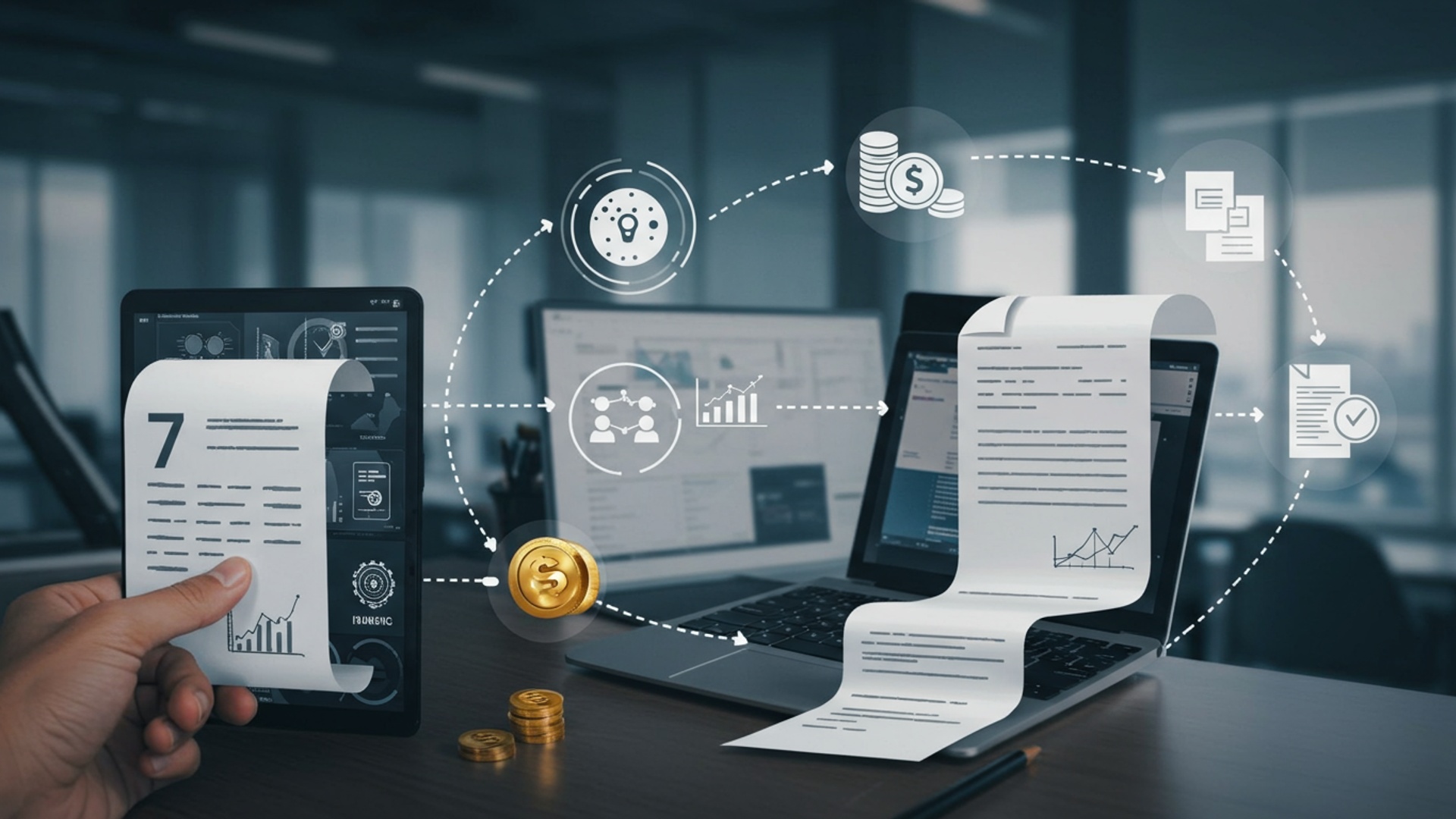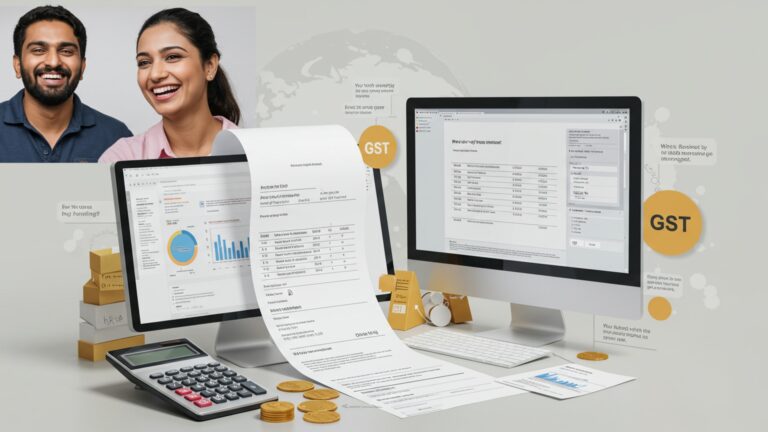7 Essential Strategies to Streamline Your Billing Process for Maximum Efficiency
Businesses frequently grapple with the labyrinthine complexities of billing, where manual data entry, delayed payment reconciliation. evolving regulatory compliance significantly impede cash flow and operational efficiency. In today’s accelerated digital economy, an antiquated billing system doesn’t just create administrative headaches; it actively erodes profitability and strains client relationships. Forward-thinking organizations increasingly recognize that merely processing invoices isn’t enough; they must proactively streamline their billing process to leverage real-time analytics and intelligent automation. The strategic shift from reactive debt collection to proactive financial management fundamentally redefines operational excellence, demanding robust, integrated approaches that mitigate errors and accelerate revenue cycles.

1. Embrace Automation for Invoice Generation and Delivery
One of the most impactful steps you can take to streamline billing process is to automate the creation and dispatch of your invoices. Manual invoicing is not only time-consuming but also prone to human error, leading to delays and potential revenue loss. Automation minimizes these risks by ensuring consistency and timeliness.
What is Automated Invoicing?
Automated invoicing refers to the use of software to automatically generate, send. track invoices based on predefined triggers or schedules. Instead of manually inputting client details, services rendered. amounts, the system does it for you.
How it Works:
- Scheduled Invoices
- Usage-Based Invoices
- Milestone-Based Invoices
For recurring services (e. g. , subscriptions, retainers), set up invoices to be generated and sent automatically on a monthly, quarterly, or annual basis.
For services billed on consumption (e. g. , cloud computing, utility services), integrate your billing system with usage tracking tools. The system pulls data and generates invoices accordingly.
In project-based work, invoices can be triggered upon completion of specific project milestones, based on pre-agreed terms.
Real-World Application:
Consider a small graphic design studio. Before automation, their administrator spent hours each month manually creating invoices in a word processor, saving them as PDFs. emailing them one by one. This often led to forgotten invoices or incorrect line items. After implementing an automated billing system, they simply input project details and payment terms once. The system now automatically generates and sends professional invoices upon project completion or on a fixed monthly schedule for retainer clients, significantly reducing administrative burden and accelerating payment cycles. This is a prime example of how to streamline billing process effectively.
Actionable Takeaway:
Invest in billing software that offers robust automation features. Configure recurring invoices, set up payment reminders. integrate with your service delivery platforms where possible. This frees up valuable staff time and ensures your billing is always on schedule.
2. Implement Online Payment Gateways
Making it easier for your customers to pay is crucial for improving cash flow and reducing outstanding receivables. Online payment gateways provide a convenient, secure. instant method for clients to settle their invoices, directly contributing to a more efficient billing process.
Understanding Online Payment Gateways:
An online payment gateway is a service that authorizes credit card or direct payment processing for businesses. It acts as an intermediary, securely transferring payment data from the customer to the merchant’s bank account.
Key Benefits:
- Convenience
- Speed
- Security
- Automation
Customers can pay anytime, anywhere, using their preferred method (credit card, debit card, digital wallets).
Payments are processed almost instantly, reducing the wait time for funds to clear.
Reputable gateways offer advanced encryption and fraud detection, protecting both your business and your customers’ financial data.
Many gateways integrate with billing software, automatically marking invoices as paid and updating accounting records.
Comparison of Popular Payment Gateways:
While many options exist, here’s a brief comparison of some widely used platforms:
| Feature/Gateway | Stripe | PayPal | Square |
|---|---|---|---|
| Primary Use Case | Developer-friendly, highly customizable, global e-commerce. | Global reach, consumer familiarity, easy setup for small businesses. | POS integration, in-person and online payments, hardware solutions. |
| Transaction Fees (typical) | 2. 9% + $0. 30 per transaction | 2. 9% + $0. 30 per transaction | 2. 6% + $0. 10 per tap/dip/swipe; 2. 9% + $0. 30 for online |
| Setup Complexity | Moderate (requires some technical knowledge for full customization) | Easy | Easy |
| Integration | Extensive APIs, integrates with many platforms | Wide range of plugins and direct integrations | Good integration with Square ecosystem, some third-party apps |
Expert Insight:
According to a report by McKinsey & Company, digital payment adoption has accelerated significantly, with consumers increasingly preferring online and mobile payment options. Businesses that fail to offer these options risk lagging behind competitors and experiencing slower payment cycles.
Actionable Takeaway:
Integrate at least one. ideally several, online payment gateways into your billing system. Clearly display payment links on your invoices and website. Consider offering popular local payment methods in addition to global ones if you have an international client base.
3. Standardize Billing Procedures and Policies
Inconsistency is the enemy of efficiency. Establishing clear, documented. standardized billing procedures and policies is fundamental to streamline billing process, reduce errors. ensure a smooth financial operation. This applies to businesses of all sizes, from freelancers to large enterprises.
What Does Standardization Entail?
Standardization means creating a consistent set of rules and steps for every aspect of your billing cycle. This includes:
- Invoice Templates
- Payment Terms
- Approval Workflows
- Follow-up Protocols
- Dispute Resolution
Use a consistent, professional invoice template for all clients, ensuring all necessary details (company details, client details, itemized services, payment terms, due date, unique invoice number) is present.
Clearly define and communicate your payment terms (e. g. , Net 30, due upon receipt, late payment penalties) to all clients from the outset.
Establish a clear process for approving invoices before they are sent, especially for larger projects or high-value clients.
Document when and how reminders for overdue payments will be sent. what steps will be taken for severely late accounts.
Have a clear process for handling billing disputes or inquiries.
Real-World Example:
A marketing agency struggled with cash flow because different project managers used varying invoicing methods and payment terms. Some offered Net 60, others Net 30. some didn’t apply late fees. This created confusion for clients and made financial forecasting difficult. By standardizing their billing policy to “Net 30, with a 1. 5% late fee per month after 60 days,” and implementing a single, automated invoice template, they saw a dramatic reduction in payment delays and improved client clarity. This strategic move helped to streamline billing process across the entire organization.
Actionable Takeaway:
Document your entire billing workflow, from service delivery to payment reconciliation. Create a “Billing Playbook” that all relevant team members can access and follow. Train your staff on these procedures regularly to ensure compliance and consistency.
4. Utilize Cloud-Based Billing Software
The days of relying on spreadsheets and desktop accounting software are quickly fading. Cloud-based billing software offers unparalleled flexibility, accessibility. integration capabilities, making it an indispensable tool to streamline billing process for modern businesses.
What is Cloud-Based Billing Software?
Cloud-based billing software, also known as Software-as-a-Service (SaaS) billing, is a system hosted on the internet and accessible via a web browser. Instead of being installed on individual computers, the software and data reside on remote servers, managed by the provider.
Advantages Over Traditional Desktop Software:
- Accessibility
- Automatic Updates
- Scalability
- Cost-Effectiveness
- Data Security
- Collaboration
Access your billing system from anywhere, on any device with an internet connection. Ideal for remote teams or business owners on the go.
Providers handle all software updates and maintenance, ensuring you always have the latest features and security patches without manual effort.
Easily scale your billing operations up or down as your business grows or changes, without significant hardware investment.
Typically operates on a subscription model, eliminating large upfront software purchases and reducing IT infrastructure costs.
Reputable cloud providers invest heavily in data security, often exceeding the capabilities of individual businesses.
Multiple team members can access and work within the system simultaneously, improving team coordination.
Considerations for Choosing Software:
- Features
- Integration
- User Interface
- Support
- Pricing
Does it offer automated invoicing, recurring billing, payment gateway integration, reporting. client portals?
Can it connect with your CRM, accounting software (e. g. , QuickBooks, Xero). project management tools?
Is it intuitive and easy for your team to learn and use?
What kind of customer support is offered?
Does the subscription model fit your budget and business needs?
Actionable Takeaway:
Research and adopt a reputable cloud-based billing solution that aligns with your business size and complexity. Popular options include FreshBooks, Zoho Invoice. QuickBooks Online. Take advantage of free trials to test features and user-friendliness before committing. This is a crucial step to streamline billing process for long-term growth.
5. Integrate Billing with Other Business Systems (CRM, Accounting)
Siloed data is a major impediment to efficiency. Integrating your billing system with other core business platforms, such as Customer Relationship Management (CRM) and accounting software, eliminates redundant data entry, reduces errors. provides a holistic view of your financial health. This seamless data flow is key to streamline billing process.
The Power of Integration:
- CRM (Customer Relationship Management)
- Accounting Software
Integrating billing with CRM means that client contact details, service agreements. payment history are all in one place. When a sale is made in CRM, it can automatically trigger invoice generation in the billing system, reducing the chance of missed billings or incorrect client details.
Connecting billing directly to your accounting software (e. g. , Xero, QuickBooks) ensures that all invoices, payments. expenses are automatically recorded and reconciled. This eliminates manual data entry, reduces human error. provides real-time financial reporting for better decision-making.
How it Works (Conceptual Example):
// Conceptual Data Flow for Integrated Systems
// CRM System records a new client and service agreement
ClientData = { "client_id": "CUST123", "name": "Acme Corp", "service_plan": "Premium Annual", "contract_value": 12000, "billing_cycle": "monthly"
} // CRM triggers an API call to Billing System
BillingSystem. createRecurringInvoice(ClientData); // Billing System generates invoice and sends to client
// Client makes payment via Payment Gateway
PaymentGateway. processPayment(invoice_id); // Payment Gateway notifies Billing System
BillingSystem. updateInvoiceStatus(invoice_id, "PAID"); // Billing System sends API call to Accounting Software
AccountingSoftware. recordTransaction({ "invoice_id": invoice_id, "amount_received": 1000, "date": "2023-10-26", "account": "Accounts Receivable"
}); // Accounting Software updates ledger and financial reports
Real-World Benefit:
An IT consulting firm previously had separate systems for client management, project tracking. invoicing. When a project was completed, the project manager would notify sales, who would then inform finance to create an invoice. This multi-step, manual process often led to delays, especially when project details were miscommunicated. By integrating their CRM (Salesforce) with their billing software (Zuora) and accounting platform (NetSuite), the completion of a project milestone in Salesforce now automatically triggers an invoice in Zuora, which then flows directly into NetSuite for reconciliation. This has cut their billing lead time by 70% and drastically reduced errors, a powerful way to streamline billing process.
Actionable Takeaway:
Evaluate your current software ecosystem. Look for billing solutions that offer robust API integrations or built-in connectors for your existing CRM and accounting platforms. Prioritize systems that facilitate automated data transfer between modules to eliminate manual handoffs and ensure data accuracy.
6. Regularly Audit and Optimize Your Billing Process
Even the most meticulously designed billing process can develop inefficiencies over time. Regular auditing and optimization are essential to identify bottlenecks, adapt to changing business needs. continuously streamline billing process for maximum efficiency.
Why Audit Your Billing Process?
- Identify Bottlenecks
- Ensure Compliance
- Detect Fraud
- Customer Feedback
- Technology Utilization
Pinpoint stages where invoices get stuck, payments are delayed, or errors frequently occur.
Verify that your billing practices adhere to current regulations, tax laws. internal policies.
Uncover any suspicious activities or potential areas of revenue leakage.
Incorporate feedback from clients regarding your invoicing clarity, payment options. overall billing experience.
Ensure you’re fully leveraging the features of your billing software and that it’s still the best fit for your needs.
Key Areas to Review During an Audit:
- Invoice Accuracy
- Payment Collection Rates
- Late Payment Penalties
- Dispute Resolution Efficacy
- Staff Training
Check for correct pricing, itemization, client details. tax calculations.
assess your average days sales outstanding (DSO) and identify reasons for late payments.
Ensure consistent application and communication of late fees.
How quickly and effectively are billing disputes resolved?
Are your billing staff adequately trained on current procedures and software?
Expert Recommendation:
Financial management experts, such as those at the Association of Financial Professionals (AFP), advocate for quarterly or at least semi-annual reviews of core financial processes. They emphasize that continuous improvement is not a one-time project but an ongoing commitment to operational excellence.
Actionable Takeaway:
Schedule regular internal audits of your billing process. Involve different team members (finance, sales, operations) to get diverse perspectives. Use the insights gained to make data-driven adjustments, update your standardized procedures. potentially retrain staff. Consider using key performance indicators (KPIs) like Days Sales Outstanding (DSO) or Invoice Processing Time to track improvements.
7. Offer Flexible Payment Plans and Transparent Communication
While efficiency often focuses on internal processes, making your billing client-centric can significantly improve payment rates and strengthen customer relationships. Offering flexible payment options and maintaining clear, proactive communication around billing matters can help streamline billing process from the customer’s perspective.
Flexible Payment Plans:
Not all clients can or prefer to pay large sums upfront. Offering options can make it easier for them to manage their finances, leading to more timely payments for you.
- Installment Plans
- Subscription Models
- Multiple Payment Methods
For larger projects or subscriptions, allow clients to pay in smaller, manageable installments over time.
Shift from one-time project fees to recurring monthly or annual subscriptions where feasible, creating predictable revenue.
Beyond credit cards, consider offering ACH/bank transfers, digital wallets (Apple Pay, Google Pay), or even alternative financing solutions for very large invoices.
Transparent Communication:
Ambiguity breeds confusion and delays. Clear communication throughout the billing cycle builds trust and prevents misunderstandings.
- Pre-Billing Confirmation
- Clear Invoice Breakdown
- Automated Reminders
- Dedicated Support
- Policy Communication
Send a summary of services and agreed costs before invoicing to prevent disputes.
Ensure invoices clearly itemize services, quantities, rates. total amounts. Avoid jargon.
Set up friendly, automated reminders for upcoming payments and overdue invoices. These should be polite and informative, not aggressive.
Provide a clear channel (e. g. , specific email address, phone number) for billing inquiries.
Clearly state your payment terms, late fees. dispute resolution process on all invoices and contracts.
Personal Anecdote:
As a freelance consultant, I once encountered a client who was consistently late with payments for large projects. After a frank discussion, I realized their internal budgeting process made large, lump-sum payments challenging. By offering a structured payment plan – 50% upfront, 25% at mid-point. 25% upon completion – their payment behavior dramatically improved. The client appreciated the flexibility. I received payments on time, demonstrating how a simple adjustment to payment terms can streamline billing process and strengthen client relationships.
Actionable Takeaway:
Review your payment options and consider introducing more flexibility where appropriate. Crucially, prioritize clear and proactive communication. Use your billing software to schedule pre-invoice summaries and polite payment reminders. Empower your customer service team to handle billing inquiries efficiently and empathetically. A client who understands their bill and has easy ways to pay is a client who pays on time.
Conclusion
Embracing the strategies outlined is more than just an operational tweak; it’s a strategic investment in your financial future. I’ve observed firsthand how businesses transform from chasing payments to proactive revenue generation by simply adopting tools like automated recurring invoicing, a key trend in today’s digital landscape. My personal tip? Focus on implementing real-time tracking for invoices and payments. This visibility, much like the recent push for UPI integration in India, empowers faster decision-making and significantly reduces discrepancies, ensuring smoother cash flow. Don’t wait for issues to compound; take proactive steps, perhaps by reviewing your current billing POS software options. By streamlining your billing, you aren’t just optimizing a process; you’re cultivating a robust, responsive business ready for sustained growth. Start implementing these insights today and watch your efficiency soar.
More Articles
How to Select the Best Billing and POS Software for Your Business
Learn 8 Proactive Steps to Minimize Billing Discrepancies Effectively
How to Select the Best POS Software Guide for Business Efficiency
Master Restaurant Billing Software India Choose Your Perfect System
How to Optimize Inventory Management POS India for Profit Growth
FAQs
Why should I even bother streamlining my billing process?
Streamlining isn’t just about speed; it’s about reducing errors, improving cash flow, saving valuable time. ultimately making your business more profitable and less stressful. It frees up resources you can use for core business activities.
What’s the quickest way to make my billing more efficient?
One of the fastest improvements comes from automating repetitive tasks. Think about using software for invoice generation, sending automated payment reminders. even reconciling payments. This significantly cuts down on manual effort and potential mistakes.
How can technology help me avoid billing mistakes?
Technology, especially integrated billing software, minimizes human error by automating calculations, applying consistent pricing rules. cross-referencing data. It provides a clear audit trail and can flag discrepancies before invoices are ever sent out, boosting accuracy.
My customers are always paying late. How can these strategies help with that?
Streamlining includes setting clear payment terms upfront, sending automated reminders before and after due dates. offering multiple, convenient payment options. Making it simple and straightforward for customers to pay on time often encourages faster payments.
Is it essential to regularly review my billing process, or should I just set it and forget it?
Absolutely review it! Business needs, technology. customer expectations are constantly changing. Regularly reviewing allows you to identify new bottlenecks, adapt to better tools. ensure your process remains as efficient and effective as possible. It’s not a one-time fix.
What’s one key thing I should do right away to start improving my billing?
A great first step is to document your current billing process from start to finish. This helps you clearly identify exactly where the biggest pain points, delays, or manual efforts are, giving you a clear roadmap for where to focus your improvement efforts.
How do I know if my streamlined billing is actually working better?
You’ll know by tracking key metrics! Look at your average days to payment, the number of outstanding invoices, your billing error rates. the amount of time your team spends on billing tasks. If these numbers show improvement, your efforts are definitely paying off.






